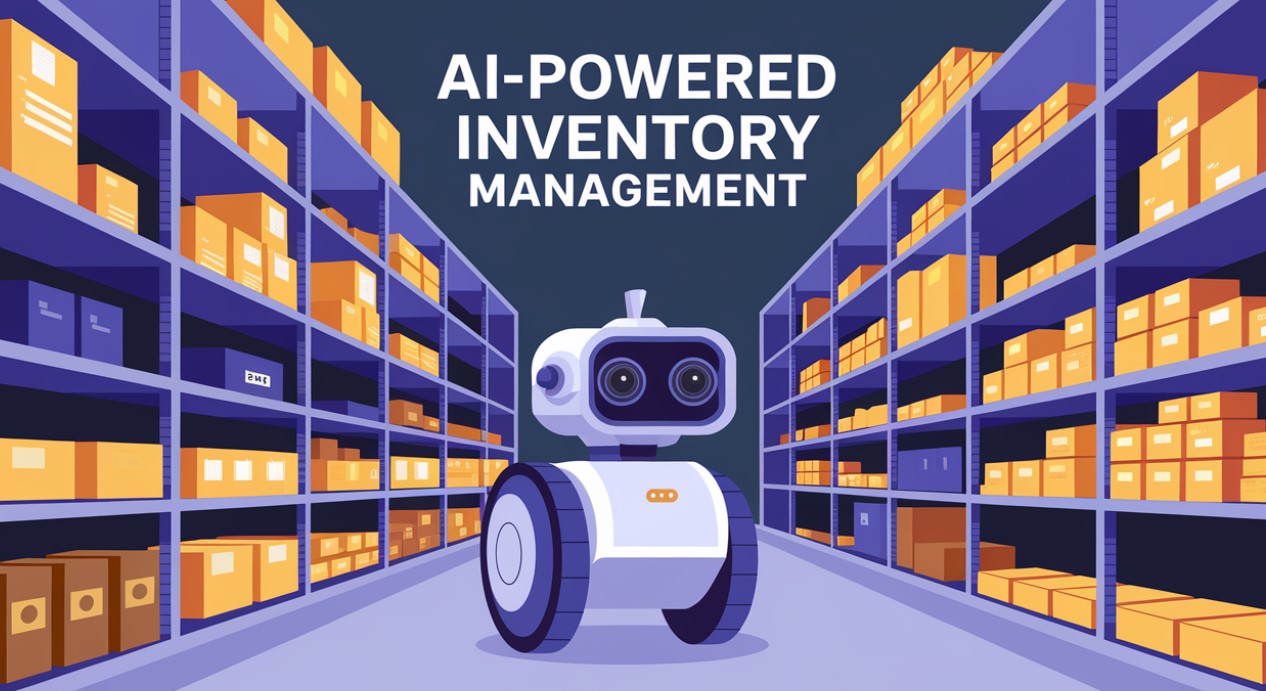
In manufacturing operations, effective and efficient inventory management lays the foundation for success. This is particularly true if you are just entering the market or are already expanding. Improving customer satisfaction, reducing expenses, and easing operational bottlenecks are all made possible by effective inventory management. Unfortunately, most of the traditional inventory management methods are usually inaccurate and inefficient, resulting in overstocking or stockouts or being overly costly operationally.
Also read : Entrepreneurial Success in West Bengal’s Manufacturing Sector
Reasons for adopting AI-Powered Inventory Management
Artificial intelligence is changing inventory management by:
1. Real-time tracking
AI-enabled systems track the inventory in real-time, eliminating the discrepancies often caused by manual counting.
2. Predicts Demand
From the historical data, machine-learning algorithms develop a model for future demand prediction, which prevents overproduction and shortages nearby.
3. Automation and Efficiency
By handling time-consuming tasks like placing orders, updating stocks, and restocking, AI frees up staff members’ time to make strategic decisions.
4. Cost Reduction
Cash flow is improved, waste is slowed, and holding costs are decreased.
5. Supply Chain Optimization
By identifying inefficiencies and proposing fixes, AI further optimizes supply chains.
6. Better Decisions
Top management can now make better decisions regarding sales strategies, sourcing, and production planning using data.
Steps to Implement AI-Powered Inventory Management
1: Assess Your Current Inventory Management System
- Before you integrate the process of AI, evaluate your existing inventory processes:
- Identify any loopholes in stock tracking, demand forecasting, and order management.
- After that have a look at past stock fallouts and their impact on business operations.
- Then see important areas where AI can add value.
2: Define Business Objectives
- Have an objective in mind for what you want to achieve with AI-powered inventory management. Common objectives include:
- Reducing inventory carrying costs.
- Minimizing overstocking or stockouts.
- Improving demand forecasting
3: Choose the appropriate AI-Powered Inventory Management Software
There are several AI-powered inventory management software available. Keep in mind factors such as:
- Scalability
- Integration
- User-Friendliness
- Customization
Step 4: Data Collection and Integration
- Everything is dependent on data. So ensure you have an accurate data collection system in place.
- Collect historical sales data.
- Integrate AI software with IoT-enabled sensors, barcode scanners, and RFID technology for real-time tracking.
- Establish a centralized data management system
Step 5: Implement AI-Driven Demand Forecasting
To accurately forecast demand, AI systems examine historical sales patterns, variations in the seasons, and market structure.
Step 6: Automate Order Management and Restocking
AI can set reorder points depending on the following for automated stock replenishment including
- Movement of sales.
- Lead times for suppliers.
- Patterns of seasonal demand.
- Computerized order management guarantees timely refilling, expedites procurement, and lowers manual mistake rates.
Step 7: Enhance Management of the Warehouse
AI maximizes the usage of warehouse space by:
- Recommending the best stock location based on the frequency of demand.
- Utilizing AI-guided selection paths to shorten retrieval times.
- Using drones and robots driven by AI to automate inventory assessments.
Step 8: Track Performance and Make Constant Improvements
Use key performance indicators (KPIs) to monitor the AI system’s performance after it is put into place:
Challenges and How to Overcome Them
Data Quality Problems
- Achieve input data with actual accuracy and consistency.
- Algorithmically clean up inconsistencies or errors.
2. Resistance to Change
- Training in tools powered by AI.
- User acceptance of automation requires a demonstration of its benefits.
3. Integration Complexities
- Select AI software that could seamlessly integrate with your systems.
- Get in touch with IT professionals to have a flat realization.
4. Cost of Implementation
- Stepwise performance or integration of AI.
- Cloud-based AI services rely more on instant outlays.
Future Developments in Stock Inventory Using AI Management
1. Smarter Assessment
The predictive analytics power of AI will direct forecast requirements and plan supply chains even more precisely lately.
2. Blockchain for Transparency
Addition of Blockchain Technology into the equation would guarantee improved traceability, lessen the risk of fraud, and up security in the inventory system.
3. Automation with AI-based Robotics in Warehouses
Use of robots powered with AI will give a highly efficient execution of activities from sorting through packing to order fulfilment.
4. Synergy of IoT with AI
The added value for both parties will scheme real-time measurements and condition-based maintenance of inventory systems.
5. Self-Learning AI Models
AI models in the future will get self-learned and will adopt the new trends in the market, such that they gain efficiency and accuracy over time.
Final thoughts
AI-enabled inventory management makes a big difference for startup manufacturing businesses. With the help of AI-driven automation, predictive analytics, and real-time tracking, companies can streamline operations with reduced costs and better-informed decision-making. All these implementing AIs in the inventory management process indeed have challenges. However, a meticulous approach to working with a proven technology in the implementation enables significant critical long-term benefits among manufacturers.
To be one of the first to take advantage of this inventory management feature, you should experiment with AI-driven solutions if you want to launch a manufacturing start-up.























